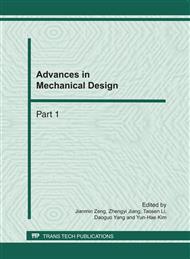p.1405
p.1410
p.1414
p.1419
p.1423
p.1429
p.1435
p.1441
p.1445
A Study on Test Technology of Ship Shafting Torsional Vibration
Abstract:
Ship shafting is a key component of ship power plant. Torsional vibration test for ship shafting is the essential step to ensure the safety of ship power systems. For the purpose of analyzing and comparing torsional vibration test methods, a study of the test methods, equipment and technology is carried out in this paper. Three different test methods are compared with each other by adopting two different test systems. The main propulsion and marine generator shafting torsional vibration characteristics are analyzed by using two different analysis methods respectively: the single order and resonance point method and the multi order and resonance point method. The results obtained in the process of testing on board ship may provide a good guidance for the further researches in this subject.
Info:
Periodical:
Pages:
1423-1428
Citation:
Online since:
February 2011
Authors:
Keywords:
Price:
Сopyright:
© 2011 Trans Tech Publications Ltd. All Rights Reserved
Share:
Citation:


